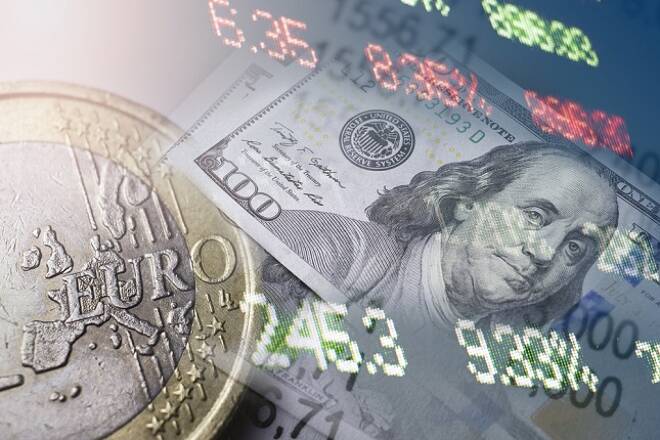Advertisement
Advertisement
Dollar Index Boosted by Weaker Euro, Gains Limited by Surge in Yen
By:
Three major events drove the two-sided price action in the U.S. Dollar last week including renewed geopolitical concerns over a potential trade war between the United States and China, renewed tensions over North Korea and dovish Fed minutes. However, the dollar index was supported by a weaker Euro.
The U.S. Dollar finished mixed against individual currencies last week, but because of the weighting, the Dollar Index finished higher for the week. The Euro represents 57.6% of the index, the Japanese Yen 13.6%, the British Pound 11.9%, the Canadian Dollar 9.1%, the Swedish Krona 4.2% and the Swiss Franc 3.6%.
June U.S. Dollar Index futures settled the week at 94.130, up 0.586 or +0.63%.
The dollar posted weekly gains against the New Zealand Dollar, the Euro, the British Pound and the Canadian Dollar. The Greenback lost ground versus the Australian Dollar and the Japanese Yen.
Three major events drove the price action in the U.S. Dollar last week.
Firstly, the dollar weakened on geopolitical concerns after President Donald Trump expressed his misgivings on the trade negotiations between the United States and China to reporters during an Oval Office meeting Tuesday with South Korean President Moon Jae-in. Asked whether he was pleased with the talks, Trump responded, “No, not really,” though he added, “They’re a start.”
The agreement reached the previous week at least delayed a trade war between the world’s two largest economies. However, Trump’s comments renewed trade war concerns, driving investors into safe haven assets and out of the dollar.
Secondly, the Dollar weakened primarily against the Japanese from Wednesday to Friday after the Federal Reserve’s May meeting minutes showed the central bank may be willing to let inflation run a little hotter than its two percent goal. Investors called the minutes “dovish”, driving U.S. Treasury yields lower and tightening the spread between U.S. Government Bond yields and Japanese Government Bonds.
Finally, the Greenback was pressured later in the week on renewed geopolitical concerns after President Trump cancelled a meeting with North Korean President Kim Jung Un.
Australian Dollar
The Australian Dollar rallied against the U.S. Dollar early in the week then held onto its gains into the close on Friday. The two-sided price action was fueled by a drop in U.S. interest rates and lower demand for risky assets.
The AUD/USD settled at .7547, up 0.0035 or +0.47%.
In other news, Reserve Bank of Australia Governor Philip Lowe said on Wednesday that the possibility of “something going wrong in China” is among the biggest economic risks faced by Australia. He was citing the build-up of debt in the world’s second largest economy.
New Zealand Dollar
The New Zealand Dollar posted a two-sided trade against the U.S. Dollar last week, first spiking to its highest level since May 11 before settling slightly lower.
The NZD/USD settled at .6916, down 0.0004 or -0.06%.
The price action was fueled by a drop in U.S. Treasury yields and trade concerns over the U.S. and China. Traders also reacted to several reports from New Zealand. Retail Sales came in lower than expected at 0.1%. Core Retail Sales also missed the forecast, coming in at 0.6% versus 1.1%. The Trade Balance, however, improved to 263 million from -156 million. Economists had forecast a gain of 200 million.
Japanese Yen
The Dollar/Yen fell sharply last week on flight-to-safety buying related to trade war concerns and renewed tensions over North Korea after a June meeting between the U.S. and North Korea was surprisingly cancel by President Trump and the softer Fed minutes. The USD/JPY settled at 109.385, down 1.374 or -1.24%.
Other Currencies
The commodity-linked Canadian Dollar ended the week sharply lower in reaction to the steep plunge in crude oil prices. The EUR/USD weakened as rising bond yields in Italy triggered nervousness among investors. Brewing political instability in Spain also weighed on the Euro. The single-currency also closed lower for a sixth straight week. The British Pound nearly hit a five-month low on worries over Brexit and further signs of weakness in Britain’s economy.
About the Author
James Hyerczykauthor
James Hyerczyk is a U.S. based seasoned technical analyst and educator with over 40 years of experience in market analysis and trading, specializing in chart patterns and price movement. He is the author of two books on technical analysis and has a background in both futures and stock markets.
Advertisement
